
Email marketing has become one of the most popular ways for companies to stay in touch with customers. Over 90% of businesses report that email marketing has helped them succeed. Companies use many types of emails for marketing and automated marketing efforts. From anniversary announcements to promotional emails, over 320 billion business and consumer emails are sent per day.
It’s not hard to see the appeal of email marketing. With a little practice, you can whip up an engaging email and reach the inboxes of hundreds of customers in minutes. Plus, tools like email templates and generative artificial intelligence (AI) make it easier than ever to create eye-catching emails, even if you’re not a design whiz.
Learning about the different types of emails is one of the best ways to take your email marketing campaigns to the next level. This guide covers everything you need to know about the most common types of emails and when to use them.
Understanding email marketing
Email marketing uses email messages to promote your business and provide value to customers. This strategy involves more than shooting messages off into cyberspace in the hopes that someone will read them. Instead, it’s a carefully planned and targeted approach to engaging customers and encouraging them to take specific actions.
There are many benefits of email marketing for businesses of all sizes. You can use this approach to:
- Make more sales and increase your revenue
- Personalize your interactions with clients
- Boost website traffic
- Build hype for new products
- Increase brand awareness
- Keep customers in the loop about your company’s milestones
- Generate new leads
- Give exclusive deals to loyal customers
- Ask customers for feedback
Of course, not all email campaigns are equally successful. We’ve all gotten business emails that seem to miss the mark. Maybe they’re too generic, pop up in your inbox too frequently, or don’t relate to your interests. These emails might catch your attention but don’t add much value to your life.
So, how can you create impactful and thoughtful emails that your audience wants to read? Implementing an effective email marketing strategy involves these basic steps:
Set goals
Create specific and measurable goals you want to achieve with your email marketing campaign. For example, you could aim to increase brand awareness, boost sales, or expand your customer base.
Build your email database and mailing list
Even the best emails won’t help you achieve your vision if you don’t have anyone to send them to. Luckily, there are plenty of ways to get clients to sign up for your mailing list. For instance, you can offer exclusive coupons or unique content for subscribers. You can also add sign-up forms to your website and link to them on your social media channels.
Know your audience
Learning about your customer base will help you deliver the right type of content. Ask clients to share basic demographic information when they sign up for your mailing list, like gender, location, and age. Surveys, web tracking, and engagement analytics also help you understand your customers’ interests and needs.
Segment your emails
Your customers are unique individuals, so an email that resonates with one client may not be relevant to another. Segmenting your email lists lets you target specific types of customers based on their interests and needs. For example, you can announce an in-person event to readers who live within two hours of the venue.
Send emails at the right time and frequency
When it comes to email marketing, timing is everything. Use email analytics to track when your readers read your messages. Then, schedule them for peak engagement times. Your content can also help you find the right frequency. For instance, a monthly newsletter will remind your audience of your brand without overwhelming them.
You should also get familiar with email marketing best practices. For instance, you should format your emails so they’re readable on various devices, like computers and smartphones. Catchy headlines and attractive images will also grab your audience’s attention.
20 types of emails for various purposes
Email is one of the most flexible and versatile marketing tools out there. You can send emails for many different purposes based on your goals. Below, we’ll explore 20 of the most popular types of email marketing and their uses.
Welcome emails
Greet new customers and email list subscribers with a friendly welcome email. This message often contains exclusive discounts, an introduction to the business, and an invitation to connect on social media.
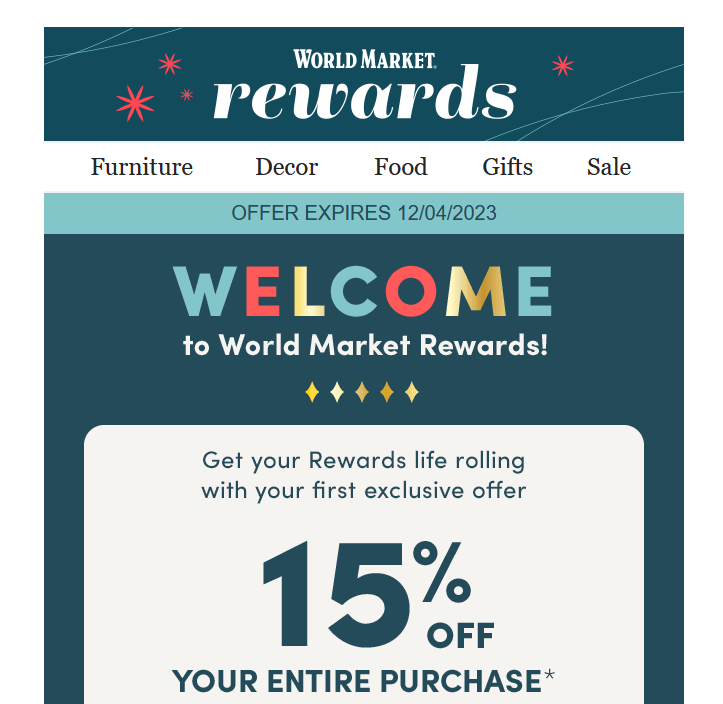
Many companies use email automation to automatically send customers a welcome message as soon as they sign up. This type of email makes a positive impression on newcomers and encourages them to explore your products and services.
Survey emails
Survey emails ask customers questions about their experiences, interests, and opinions. These emails can include multiple-choice, true/false, yes/no, rating scales, or open-ended questions about your products or services. You can also ask customers to rate different aspects of your business, like the quality of your customer support.
Survey emails provide valuable information about your customers’ level of satisfaction and perceptions of your business. This data allows you to make continuous improvements and build customer loyalty.
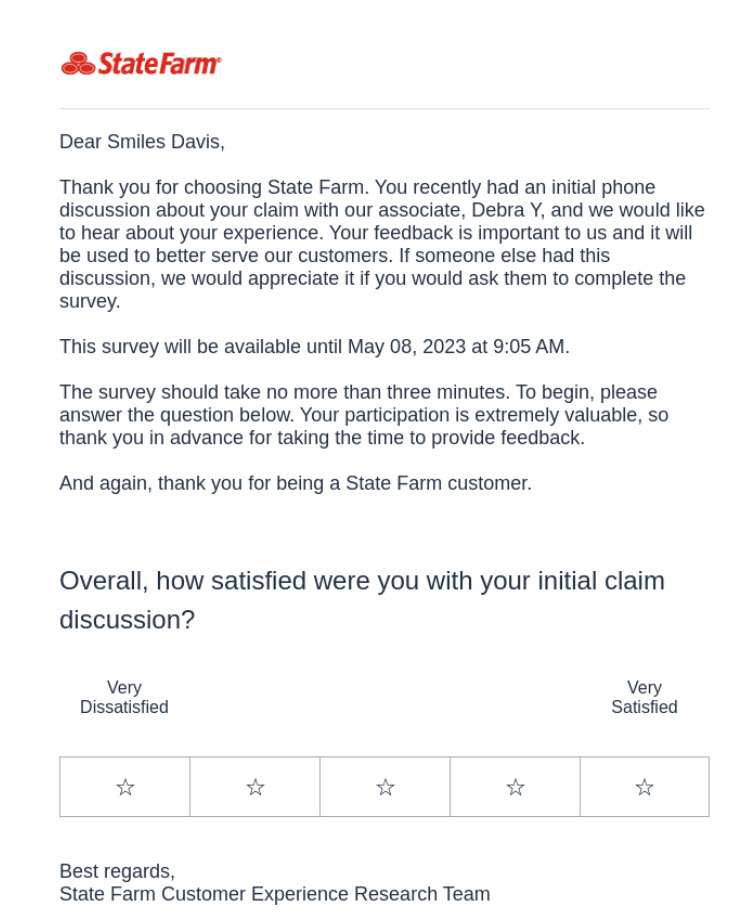
Milestone and progress emails
Send customers updates about your business with milestone and progress emails. Let’s say you’re building a bigger and better storefront. You can send periodic emails to inform customers about your progress and build excitement. You can also create milestone emails to share your company’s accomplishments, such as winning an industry award.
Promotional emails
Advertise your business and entice your audience with promotional emails. These messages spotlight your products, services, special offers, and events. Say you’re planning a huge holiday blowout sale. Send your customers promotional emails in the weeks leading up to the sale to get the word out and increase anticipation.

Lead generation emails
Entice new potential customers with lead-generation emails. You should strategically craft these emails to target people interested in your services. For instance, if your company creates restaurant software, you could send lead generation emails to restaurant owners and chefs. Use these messages to collect contact information from leads so you can follow up with more details about your products.
Lead nurturing email sequences
Once you’ve generated new leads, you can send a series of emails to guide them through your sales funnel. Say you want to encourage leads to subscribe to your meal kit delivery service. You could start by sending them an email with educational tips about cooking. Next, send emails highlighting the benefits of your service and offering exclusive discounts if they sign up. This strategy builds your relationship with leads and converts them to customers.
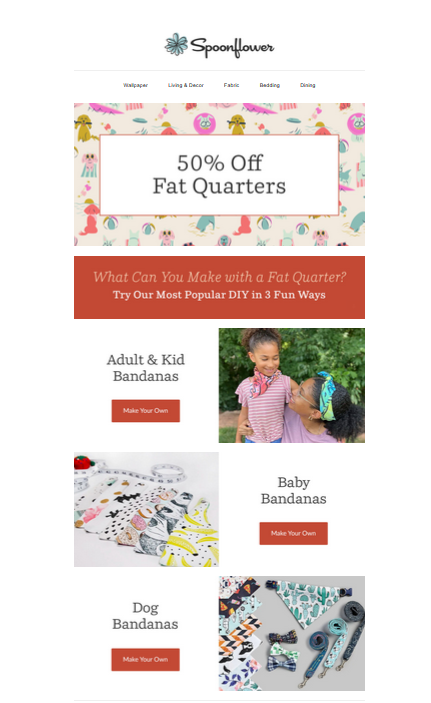
Discount emails
Everyone loves a discount, especially when they’re delivered right to your inbox. Use discount emails to give exclusive deals and special offers to your audience. These emails can boost sales and build customer loyalty.
Abandoned cart emails
Customers often place products into their online shopping carts but leave before completing their purchase. Abandoned cart emails remind them that they haven’t finished shopping, which may prompt them to return. Some companies also use these emails to offer discounts and entice shoppers back.
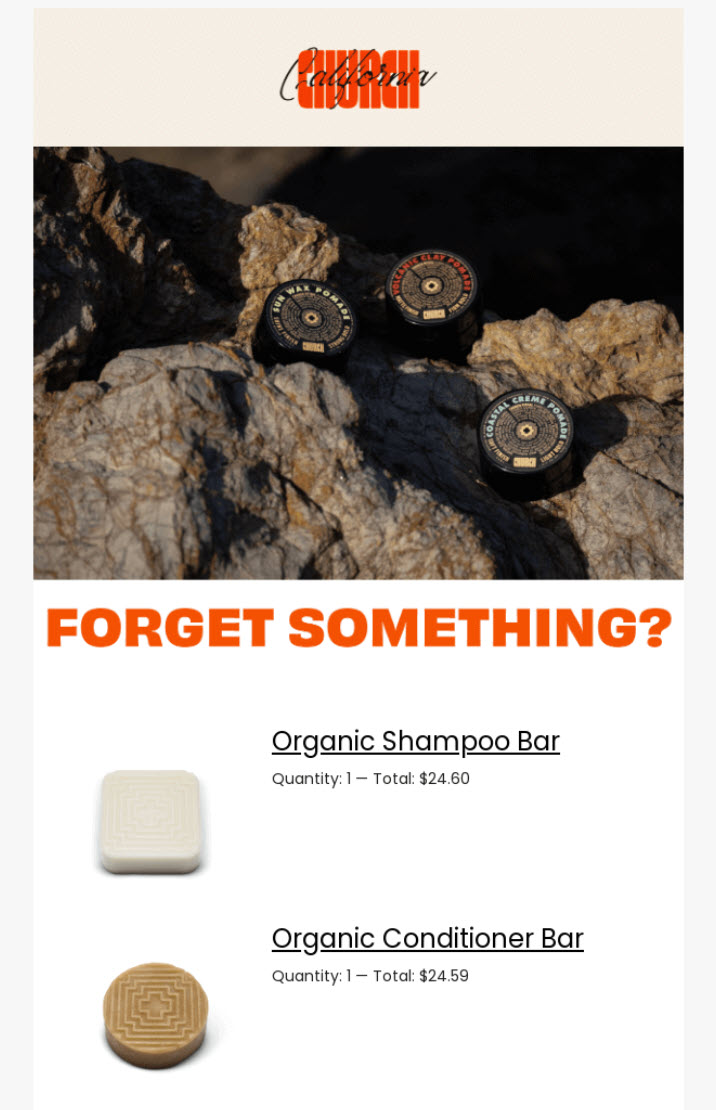
Confirmation emails
Automatically send customers a confirmation email when they complete a specific action on your website. For example, you can send a confirmation email when a client orders a product or schedules an appointment. These messages give customers peace of mind and allow them to verify the details of their order or appointment.
Curated content emails
Curated content emails contain exclusive content tailored for a specific customer or audience. These emails often feature blog posts, infographics, videos, and other content related to the reader’s interests.
Anniversary emails
Celebrate the date your customer joined your mailing list or subscribed to your content by sending an anniversary email. This message could include a coupon or data about the client’s interactions with your business over the last year. Anniversary emails reward customer loyalty and show your appreciation — which ultimately builds your relationship with them.
Announcement emails
Share big news with your audience by sending announcement emails. For instance, you can announce the launch of a new product line or upcoming events.
Transactional emails
Send customers an automatic email when they make a purchase. These emails include important details like order numbers, price, and billing information.
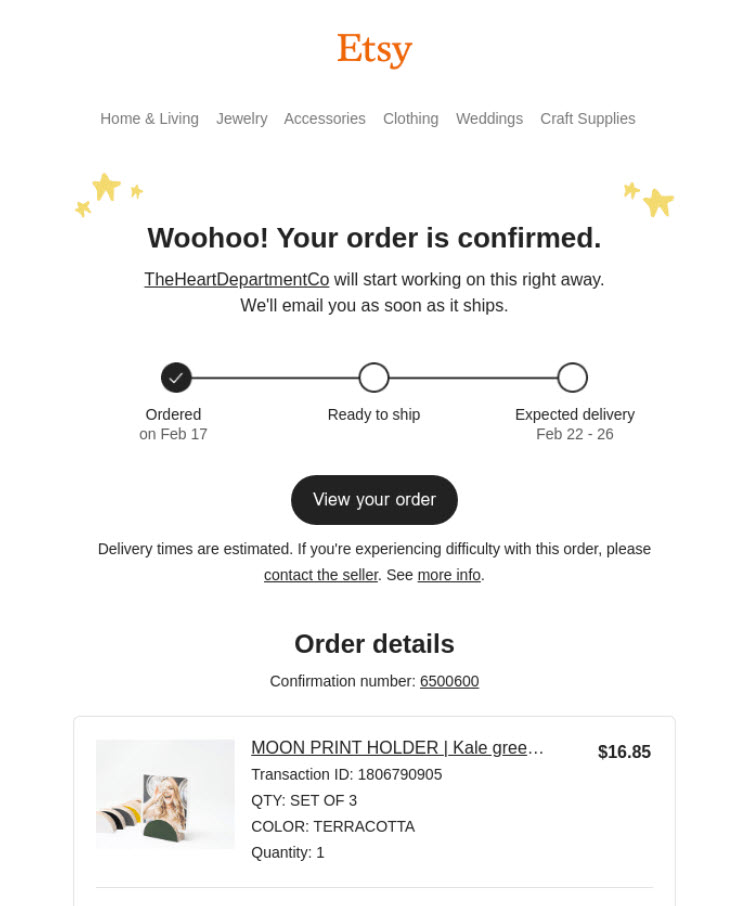
Community emails
Connect with members of your organization or local area with community emails. These messages can include relevant announcements, educational materials, and updates.
Networking emails
Build relationships with other business leaders and professionals by sending networking emails. You can use these messages to introduce yourself or follow up after making a connection.
Event invitation emails
Send emails to your clients to invite them to events. These messages should include the event’s date and time, location, agenda, and other relevant information. Add a digital RSVP option to make it easy for guests to confirm their attendance.
Re-engagement emails
Reconnect with inactive subscribers or customers with re-engagement emails. Offer incentives like discounts or exclusive content to motivate them to return to your brand. If inactive customers don’t engage with this email, you can remove them from your mailing list.
Marketing emails
Marketing emails promote your products and services to targeted audiences and include calls to action. There are many types of marketing emails, including abandoned cart and event invitation emails.
Standalone emails
Standalone emails are one-off, time-sensitive messages that aren’t part of a larger marketing campaign. For example, you might send a standalone email to promote a special event or announce a flash sale.
Review request email
Ask customers who have purchased products or services to provide public feedback with a review request email. These messages can help you increase your company’s credibility and improve the customer experience.
Marketing-specific email types
It’s normal to feel a bit overwhelmed when you start exploring the many types of email campaigns. But what email is suitable for the following types of messages in business? Here are the two categories you should consider:
- Email marketing: The best types of emails for marketing allow you to show off your brand, products, and services. They also include calls to action encouraging customers to engage with your company. Popular marketing emails include abandoned cart, event invitation, promotional, and discount emails.
- Lead nurturing: With this approach you use a sequence of emails to build relationships with potential clients and encourage them to learn more about your products. The best lead nurturing emails include welcome, promotional, and re-engagement emails.
Email marketing platforms like Constant Contact have bulk emailing features that allow you to segment your mailing list. Then, you can send emails to multiple audiences for different purposes. For instance, you can send different promotional emails to new leads and existing customers.
However, you should avoid overwhelming your customers with overly frequent emails. Follow email marketing best practices to prevent your messages from getting marked as spam.
Choosing the right email type
There are many different types of email accounts for businesses. Some companies use web-based accounts like Gmail and Outlook, though their capabilities for email marketing are limited. Many businesses choose to create and manage their email marketing through an email service provider (ESP), like Constant Contact.
Factors to consider when selecting an email account include:
- Cost
- Security features
- Analytics tools
- Size of the email list
- Available types of mailboxes
Email merge and marketing fundamentals
Email merge uses a single template to create personalized messages for every member of your mailing list. For example, you can automatically insert each recipient’s name into the email and add personalized subject lines with the click of a button. Constant Contact offers seamless email merging for fast and efficient marketing. This feature saves time and lets you deliver tailored content to customers.
Constant Contact also has AI email tools to help you craft the perfect emails. You can use this technology to generate content in your brand voice, brainstorm ideas, and automate your marketing.
Use email marketing to engage leads and nurture customer relationships
Companies can use many types of email marketing campaigns to connect with customers and promote their brands. For example, you can send progress emails to update clients about a new product and promotional emails about an upcoming sale. Increase your success by following email marketing best practices, like sending emails at the right time and personalizing them.
Join our list to see how you can dominate any market, topic, or niche with content.




